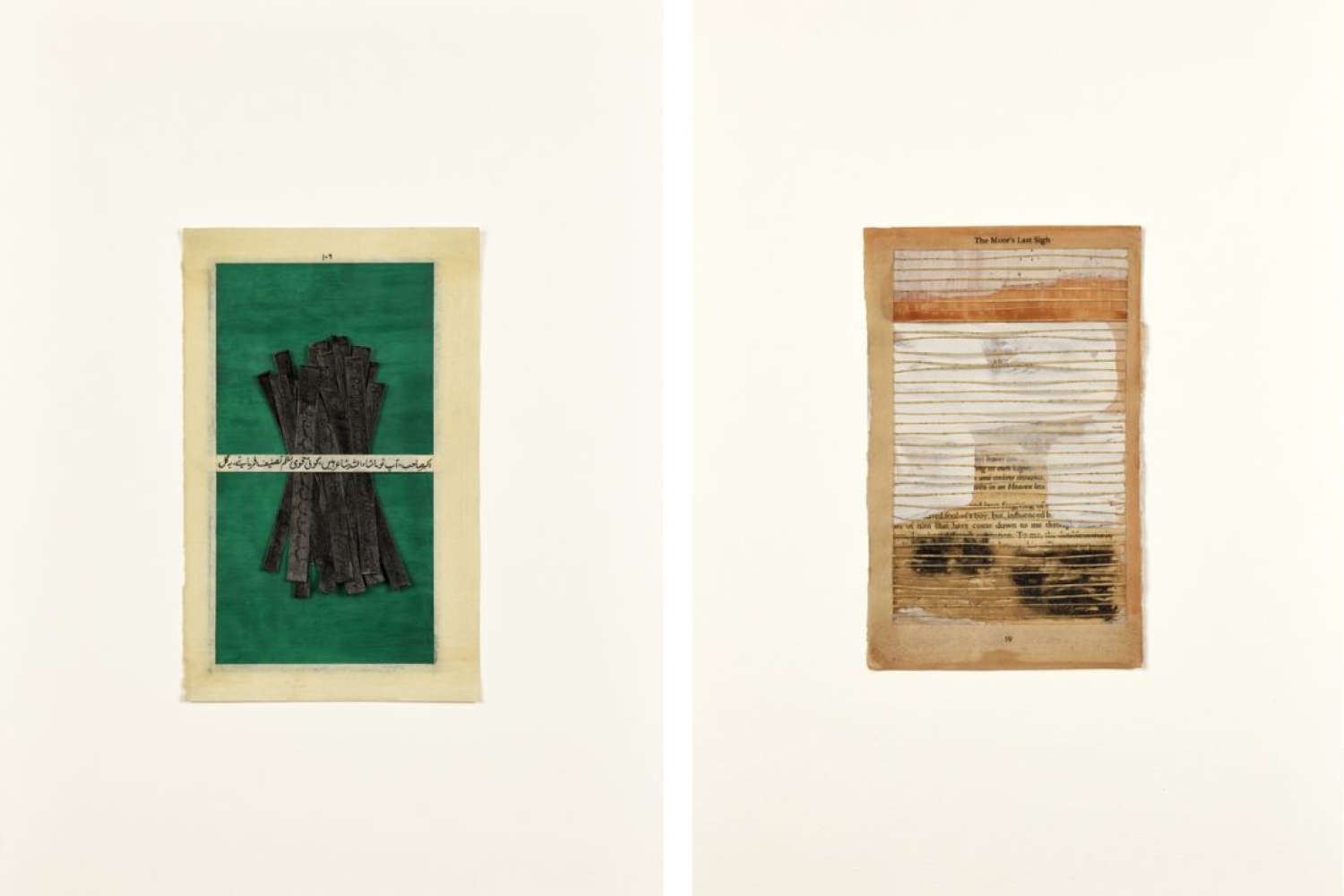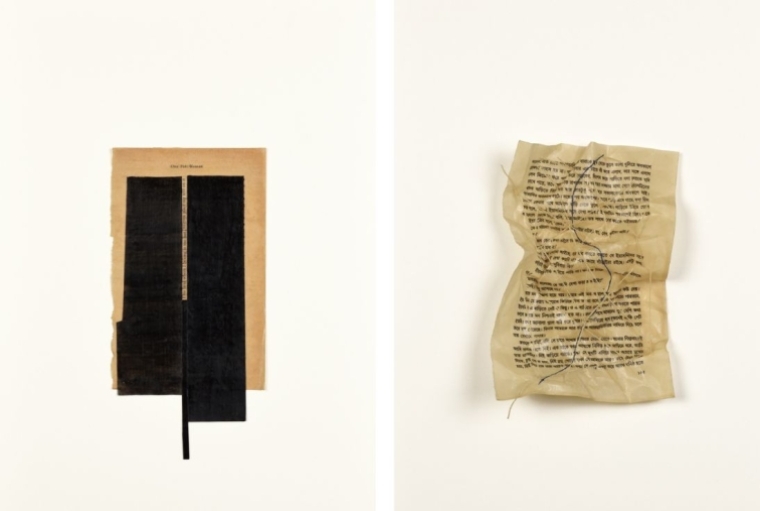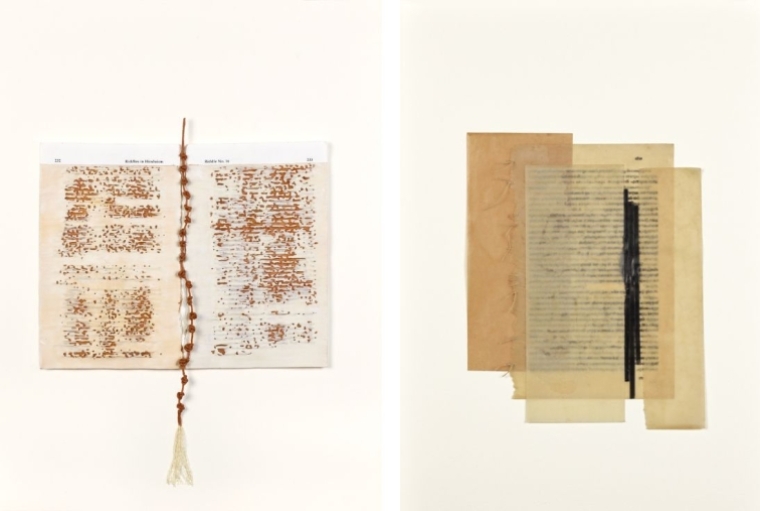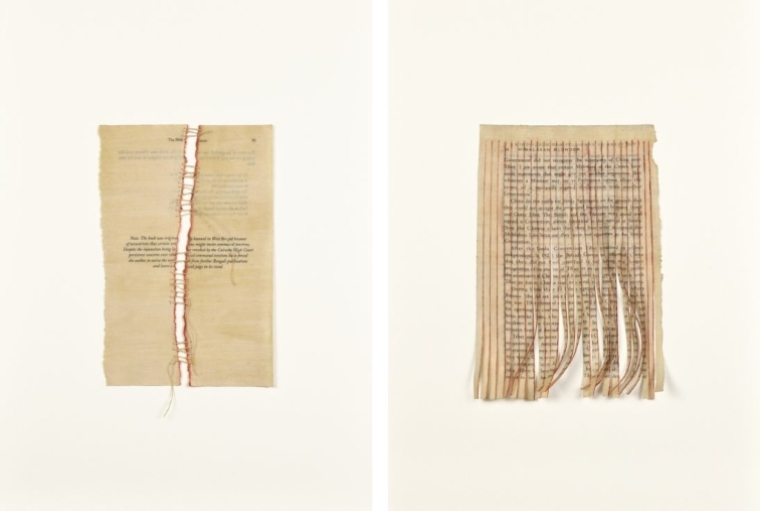
Angarey, 2025 (left) | The Moor's-Last-Sigh II, 2025 (right)

Angarey, 2025 (left) | The Moor's-Last-Sigh II, 2025 (right)
In The Language of Silence, Mansha Chhatwal looks for the constantly altering perception of the idea of an ideal India within the pages of books banned in the country since pre-independence times. As she redacts parts of the text within these books using beeswax, she recalls the blasphemous act of book burning to conspicuously talk about censorship, but also poignantly suggest the immeasurable loss of stories that matter.

Perumal Murugan, 2025 (left) | Dwikhandita, 2025 (right)
Mansha’s current body of works is an elegy for all the knowledge, lost, and gate kept by those in power, robbing people—readers— of their agency to make an independent and informed decision about what they read. Mansha’s exhibition assumes critical importance today, when words uttered, at least publicly, must be carefully measured. Her subtle yet pertinent social commentary hits right where it hurts the hardest. The use of beeswax to embalm the pages of books that have been burnt or censored is a way to preserve the perseverance/ resilience of all the writers who refused to cower down.

Riddle No. 16, 2025 (left) | Meesa II, 2025 (right)
The Language of Silence, however, goes beyond just the politics of it all. It transforms into a eulogy to books and their indispensable role in expanding the world views of their readers. The heady smell of the beeswax conjures up the devotional atmosphere one associates with the act of worship, beckoning viewers to ponder upon our reverential relationship with books.

Split, 2025 (left) | Himalayan-Blunder, 2025 (right)
It is evident that this exhibition is the work of a bibliophile. Mansha uses a plethora of literary devices—metaphor, oxymoron and irony—to her advantage to create a visual lexicon that makes the unsettling social silence tangible enough to initiate some discourse.
Words Trisha Mukherjee
Dates 31.03.2025